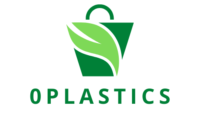Embarking on the journey of building and sustaining a plastic-free marketplace is a commendable endeavor that aligns with the global shift towards sustainable living. However, this path is not without its challenges. Entrepreneurs in this space face unique hurdles as they navigate through the complexities of creating a platform that not only promotes eco-friendly alternatives but also establishes a lasting presence in the marketplace. Let’s explore the challenges faced by those championing plastic-free marketplaces and the strategies employed to overcome them.
1. Sourcing Sustainable Products:
Challenge: Finding reliable suppliers and manufacturers committed to sustainable practices can be challenging. Ensuring that products meet stringent environmental criteria while maintaining quality and affordability can be a delicate balance.
Strategy: Establishing strong relationships with eco-conscious suppliers, conducting thorough vetting processes, and actively seeking out innovative products are key strategies. Networking within sustainability circles and attending industry events can also open doors to reliable suppliers.
2. Consumer Education:
Challenge: Educating consumers about the environmental impact of plastic and the benefits of plastic-free living is an ongoing challenge. Overcoming preconceived notions and encouraging behavioral change require continuous effort.
Strategy: Implementing robust educational initiatives within the marketplace, including informative blog posts, guides, and interactive content, can empower consumers to make informed choices. Collaborations with influencers and environmental advocates can also amplify educational efforts.
3. Balancing Accessibility and Affordability:
Challenge: Offering products that are both accessible and affordable while maintaining sustainability standards can be a delicate balancing act. Some consumers may perceive eco-friendly products as expensive or exclusive.
Strategy: Negotiating bulk deals with suppliers, optimizing operational efficiencies, and exploring partnerships with eco-friendly brands can contribute to keeping prices competitive. Communicating the long-term value and environmental benefits of sustainable products can also shift consumer perspectives.
4. Navigating Packaging Challenges:
Challenge: Minimizing or eliminating packaging waste poses a significant challenge. Balancing the need for protective packaging with the goal of reducing environmental impact requires creative solutions.
Strategy: Exploring innovative packaging alternatives, such as compostable materials or refillable containers, can address this challenge. Collaborating with packaging experts and actively seeking feedback from consumers on packaging preferences can inform sustainable packaging choices.
5. Overcoming Supply Chain Complexities:
Challenge: Managing a sustainable and ethical supply chain can be complex. Ensuring fair labor practices, reducing carbon footprints, and maintaining transparency across the supply chain pose logistical challenges.
Strategy: Prioritizing partnerships with suppliers who share the commitment to sustainability and ethical practices is crucial. Implementing traceability measures, conducting regular audits, and engaging with suppliers in ongoing conversations about sustainability contribute to a transparent supply chain.
6. Creating Brand Recognition:
Challenge: Building brand recognition in a competitive market requires strategic marketing efforts. Differentiating a plastic-free marketplace from conventional competitors and communicating its unique value proposition can be a hurdle.
Strategy: Developing a compelling brand narrative, leveraging social media and digital marketing channels, and collaborating with influencers and sustainability advocates can enhance brand visibility. Engaging in community-building activities and participating in relevant events also contribute to establishing a distinct brand identity.
7. Adapting to Regulatory Changes:
Challenge: The regulatory landscape around sustainability and plastic use is subject to change. Navigating evolving regulations and ensuring compliance with environmental standards can be demanding.
Strategy: Staying informed about upcoming regulatory changes, maintaining flexibility in business practices, and proactively adjusting operations to align with new standards are essential strategies. Engaging with industry associations and advocacy groups can provide insights into upcoming regulations.
8. Scaling Operations Sustainably:
Challenge: Scaling a plastic-free marketplace while maintaining sustainability practices requires careful planning. Rapid growth can strain resources and increase environmental impact if not managed thoughtfully.
Strategy: Prioritizing sustainable scaling practices, such as optimizing logistics for reduced carbon footprint and continuously seeking innovative eco-friendly solutions, ensures that growth aligns with the marketplace’s core values. Regularly reassessing sustainability practices during periods of expansion is crucial.
In conclusion, building and sustaining a plastic-free marketplace is a journey fraught with challenges, but these challenges are surmountable with strategic planning, a commitment to sustainability, and a proactive approach to problem-solving. As these marketplaces navigate the complexities of the business landscape, they contribute significantly to the global effort towards a more sustainable and plastic-free future.
